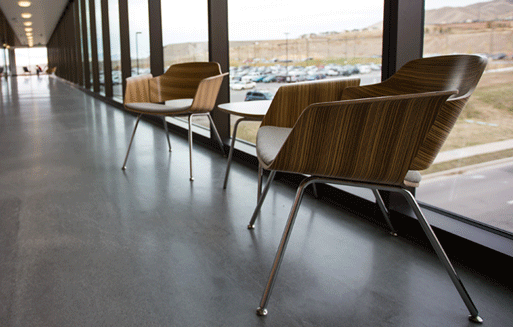Choosing the Right Office Chair for Back Pain Relief: A Comprehensive Guide
Where many of us spend the majority of our day seated at a desk, the choice of office chair can have a profound impact on our comfort, productivity, and, most importantly, our back health. Back pain is a common complaint among office workers, often stemming from poor ergonomics and inadequate seating. However, by choosing the right office chair designed for back pain relief, you can transform your work experience and alleviate discomfort.

In this comprehensive guide, we will explore the key factors to consider when selecting the perfect office chair for back pain relief.
The Importance of Ergonomics
Before diving into the specifics of office chair features, it's essential to understand the significance of ergonomics. Ergonomics is the science of designing workspaces and tools to accommodate the needs of the worker, with the primary goal of reducing discomfort and fatigue. When applied to office chairs, ergonomic design aims to provide the necessary support to maintain a healthy and pain-free posture throughout the workday.
Key Ergonomic Features to Look For
-
Lumbar Support
Proper lumbar (lower back) support is paramount in preventing and alleviating back pain. Look for chairs with adjustable lumbar support that can be positioned to match your spine's natural curvature.
-
Adjustability
A high-quality office chair should offer a range of adjustments, including seat height, backrest tilt, and armrest height. These adjustments allow you to customize the chair to your body's unique requirements.
-
Seat Depth and Width
The depth and width of the seat should accommodate your body comfortably. Ensure that there is enough room to sit with your feet flat on the floor and some space between the edge of the seat and your knees.
-
Backrest Shape
A well-designed backrest should provide support for your entire back, from your lower back to your upper shoulders. Look for chairs with a contoured backrest that follows the natural curve of your spine.
-
Armrests
Adjustable armrests can help you maintain a neutral wrist position and relieve stress on your shoulders and upper back. They should be positioned to allow your arms to rest comfortably while typing or performing tasks.
Types of Office Chairs for Back Pain Relief
Now that we've established the importance of ergonomics let's explore various types of office chairs designed to alleviate back pain:
-
Ergonomic Office Chairs
These chairs are explicitly designed with the principles of ergonomics in mind. They often feature all the key ergonomic adjustments mentioned earlier, making them an excellent choice for back pain relief.
-
Task Chairs
Task chairs are versatile and designed for various office settings. They typically provide decent back support and are suitable for back pain relief when chosen with ergonomics in mind.
-
Executive Chairs
Executive chairs combine comfort and style. While they may not always have all the ergonomic features of a dedicated ergonomic chair, high-quality executive chairs often provide excellent lumbar support.
-
Mesh Chairs
Mesh chairs are known for their permeability and comfort. The mesh backrest can provide adequate support and ventilation to keep you cool during long hours of work.
-
Kneeling Chairs
Kneeling chairs promote an open hip angle and a natural curve in the lower back. They may take some time to get used to but can be effective in reducing lower back strain.
ALSO READ | Maintenance and Longevity: Caring for Your Office Furniture Investment
Consider Your Body Type
The ideal office chair for back pain relief can vary depending on your body type. Consider these factors when choosing a chair
-
Height
Taller individuals may require chairs with a higher backrest to support their entire spine, while shorter individuals may find smaller chairs more comfortable.
-
Weight
Heavier individuals may need chairs with extra support and durability to ensure long-term comfort and reliability.
-
Body Shape
The curvature of your spine and your body's natural alignment play a role in chair selection. Chairs with adjustable components are ideal as they can be tailored to your specific needs.
Budget Considerations
While it's tempting to opt for the most expensive office chair in the market, it's not always necessary to break the bank for back pain relief. There are high-quality, budget-friendly options available that provide excellent ergonomic support. However, keep in mind that investing in a quality office chair is an investment in your health and productivity.
Testing and Trying Before Buying
Before making a final decision, it's advisable to test the chair whenever possible. Sit in it for an extended period, adjust the settings to your liking, and assess your comfort level. Many retailers and manufacturers offer trial periods or money-back guarantees, allowing you to make an informed decision without risk.
Additional Tips for Back Pain Prevention
While choosing the right office chair is a significant step in back pain relief, here are some additional tips to prevent and alleviate back pain:
-
Take Regular Breaks: Stand up, stretch, and walk around at regular intervals to reduce the strain on your back.
-
Proper posture: Maintain proper sitting posture by keeping your feet flat on the floor, knees at a 90-degree angle, and your back supported by the chair's lumbar support.
-
Exercise: Engage in regular exercises that strengthen your back and core muscles to support your spine.
-
Monitor Screen Position: Ensure that your computer monitor is at eye level to prevent neck and upper back strain.
Conclusion
Choosing the right office chair for back pain relief is a vital step in creating a comfortable and productive workspace. Prioritize ergonomics, consider your body type, and test chairs before making a decision. Remember that investing in a quality chair is an investment in your health and well-being. By selecting the right chair and practising good ergonomic habits, you can work pain-free and enjoy improved comfort and productivity in your daily work routine. Your back will thank you for it!
- 09.12.2023
-
Category:
- Mesh Chair